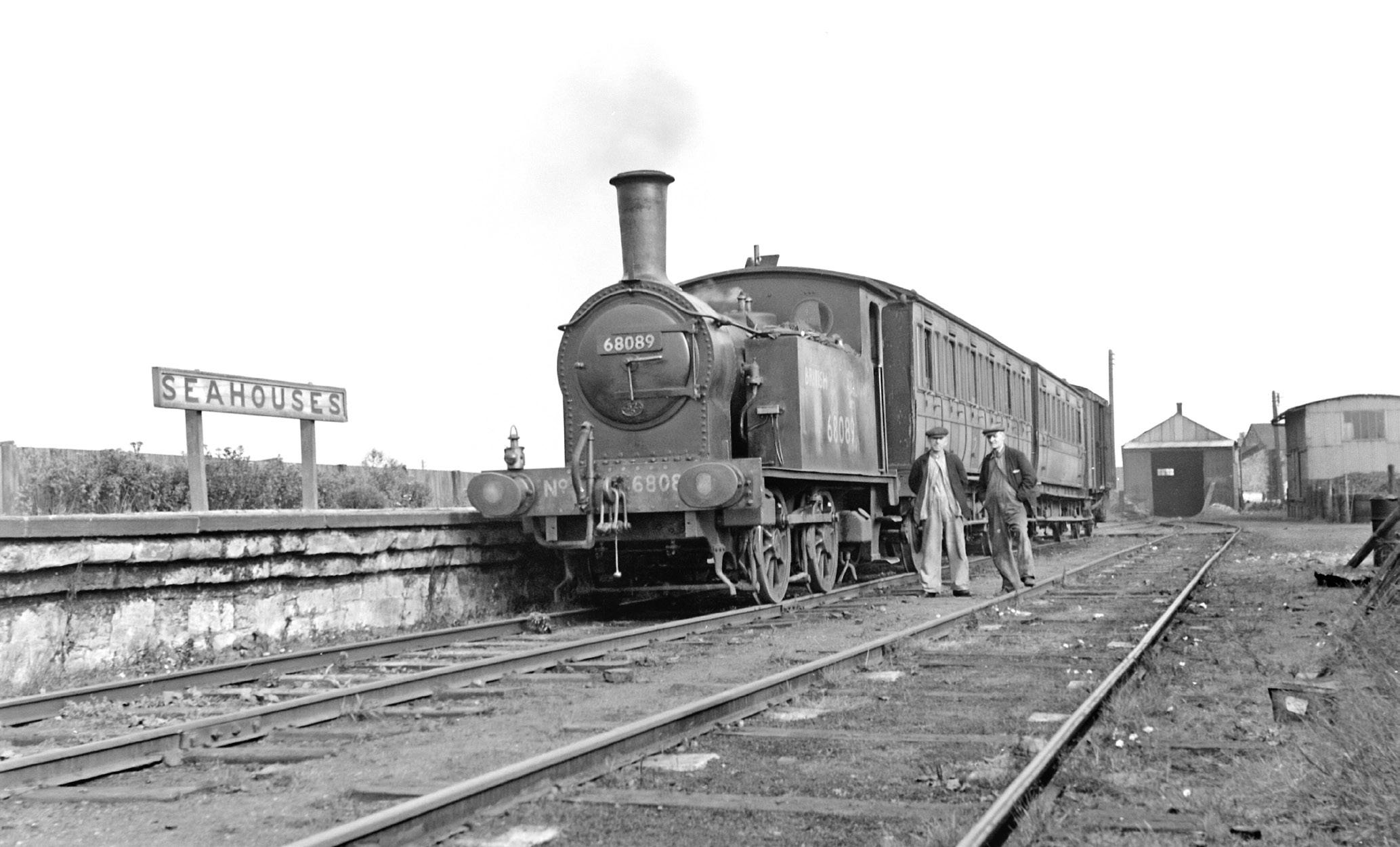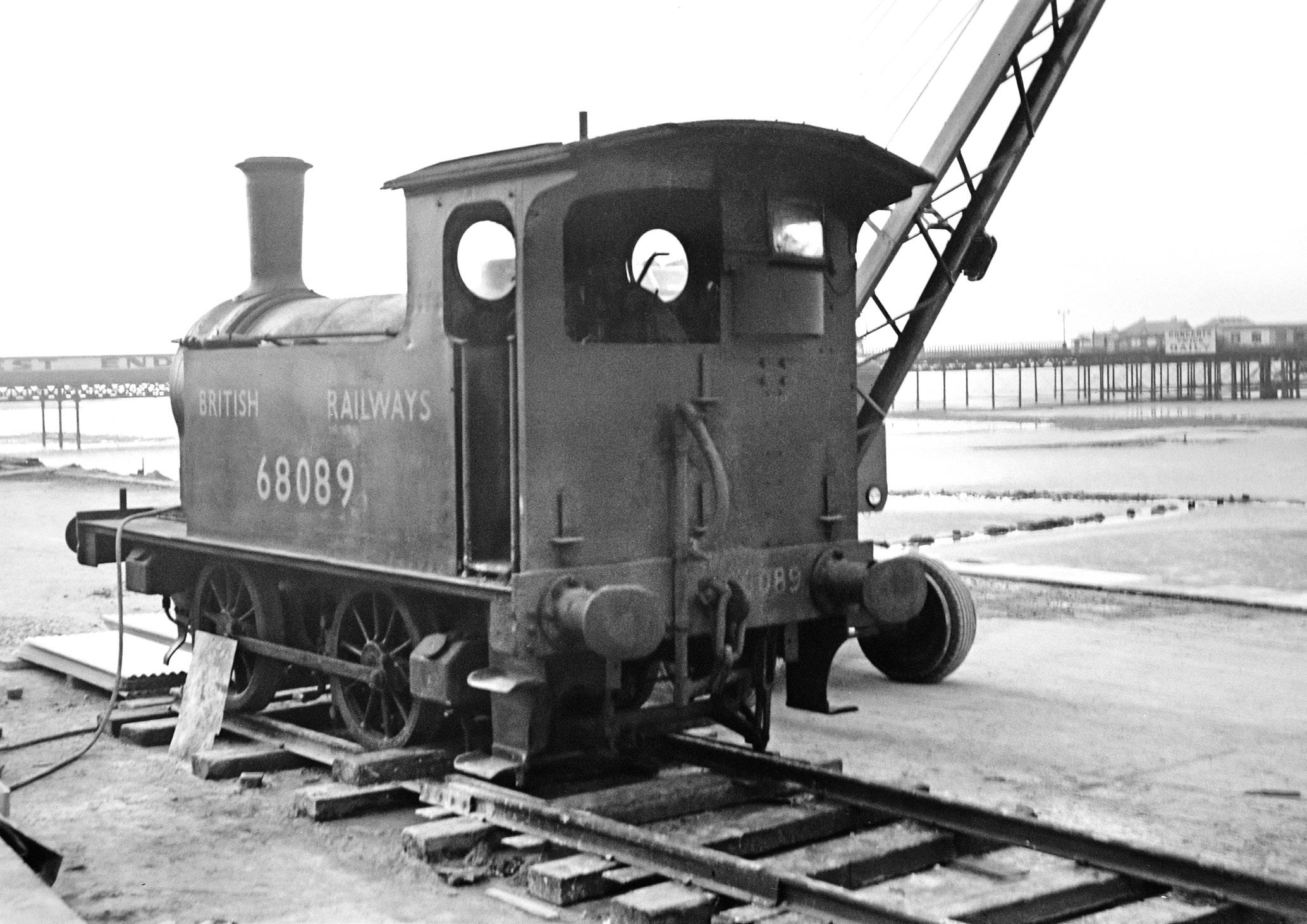RAILWAY TIMES

The history periodical featuring British Railways year by year
Issue No 4: 1951



The history periodical featuring British Railways year by year
Issue No 4: 1951


No not Mr. Spock in the gutter but rather an 0-6-0 taking the plunge!
Class C2X and their predecessors the C2 class were known colloquially as ‘Vulcans’ having been constructed at the Vulcan Foundry in Newton-le-Willows.
No 32522 which had been hauling the 9:30am goods service from Chichester to Midhurst plunged down the embankment which had been washed away by water impounded following the blocking of a culvert some half mile south of Midhurst station. Fortunately driver Fred Bunker of Hove was alerted by his passed fireman George Howes of Bognor who had noticed the yawning chasm and both managed to jump clear.
Breakdown trains from both Brighton and Fratton were brought to the scene but were unable to retrieve the locomotive or tender due to the instability of the embankment adjacent to the collapsed culvert but they were able to remove the wagons.
It was only after several hundred yards of embankment had been removed towards the station to the south at
Cocking that gangs were able to lay some temporary track to enable the tender and locomotive to be hauled up the incline using Kelbus gear. The near vertical position of the locomotive tender still attached to one wagon of its goods train is apparent in the above view, the remaining wagons having been withdrawn by this time. It was the weight of the tender and of the locomotive on an unstable embankment that precluded an easy recovery.
The resulting gulley caused by the collapsing culvert was some 30 feet deep. The 3 ton contents of the tender promptly caught fire as it cascaded down to the open firebox door and the conflagration was replenished by a further 10 tons of coal being gravity fed from the smashed wagon. This was left to burn itself out over several days and was still smouldering some three weeks later. It was not until the end of February that recovery went ahead and the C2X taken to Brighton Works for repair. Despite the fact that it was then 51 years old the 0-6-0 was repaired and coupled to a replacement tender in the shape of one cobbled together from that of another C2X and a scrapped T9 class. No 32522 saw a further ten years of service until withdrawn from traffic in October 1961.
‘THE MERCHANT VENTURER’ AND ‘THE WILLIAM SHAKESPEARE’ WERE INTRODUCED BY THE WESTERN REGION FROM MAY 1951

Carrying the appropriate headboard Castle Class No 5087 Tintern Abbey heads under Westbourne Bridge on the exit from Paddington with the down ‘Merchant Venturer’ heading for the West. R C Riley 15232 / Transport Treasury
‘The Merchant Venturer’ named train had its origin in the 1951 Festival of Britain when it was one of two services from Paddington designed to appeal to Londoners wishing to have a day trip to regional cultural centres hosting events as part of the Festival. In the case of ‘The Merchant Venturer’ serving Bath, Bristol and Weston-super-Mare with the other new service the ‘William Shakespeare’ serving Stratfordupon-Avon.
Although the latter ran for just one season, the ‘Merchant Venturer’ continued on a seasonal basis until 1961 a year after the June 1960 Restaurant Car tariff; illustrated right and overleaf. The name originated from the Bristol based Society of Merchant Venturers whose origins lay in the medieval guilds receiving their Royal Charter in 1552. It regulated and dominated sea trade through Bristol’s important port for centuries becoming highly influential and wealthy.
Although today’s Great Western Trains resurrected the
name in December 2009 for an IC125 hauled London to Plymouth service via Bristol it, unsurprisingly in view of today’s concerns with any organisation’s past links to slavery, no longer appears in their timetables.

The 1951 ‘Electrification of Railways’ report, chaired by C M Cock, Chief Mechanical Engineer of the Railway Executive, in many respects reiterated the current position in that London Transport should retain its 630vDC fourth rail system, the Southern Region its 660v DC third rail system and that future main line electrification should take the form of 1500vDC overhead as recommended in the 1927 Pringle Committee’s report.
However, this latter decision was promptly overturned as the BTC later inclined towards the 25kvAC system that, at the time of the 1951 report, was being trialled by the SNCF in France with encouraging results and indeed a version was to be tested in the UK on the converted lines serving Lancaster & Morecambe.
This isolated Lancaster area scheme could trace its origins back to the Midland Railway’s use of the branch to trial a 6,600v AC overhead electrification at 25 kHz in 1908. In 1951 work was begun to convert the route to 50 kHz as a trial for the upcoming 25kvAC system which would become the new standard for future mainline electrification.
The original electric stock was withdrawn in 1951 to be replaced temporarily by steam hauled services whilst the infrastructure was converted. In 1952 trials began with refurbished surplus three car electric units originally built for the L&NWR 4th rail DC system which had operated the Willesden and Earls Court line until closure to passenger traffic in 1940. These sets continued in use until the branch was eventually abandoned in 1966.
In the body of the report various areas of the UK currently operating with electric traction were highlighted in a series of maps one of which illustrated the extensive 3rd rail system on Tyneside that had been inaugurated by the North Eastern Railway back in 1904.


Ex-LMS 1500v DC emu No M28579M is seen operating the Manchester to Altrincham service. These units were later designated as Class 505 and fitted with more modern pantographs but their operation ended in 1971 with conversion of the route to 25kV AC. OTAHL-ADD094
The crew proudly pose for the photographer with their Tweedmouth based 0-4-0T mount No 68089 which would be withdrawn in three months time being the penultimate member of its class. However its career was not over for it was sold to a contracting firm who were undertaking works on Morecambe promenade where it could be seen until scrapped in 1955. Neville Stead NS208804 / Transport Treasury

And here is No 68089 still wearing its BR livery and number sitting on the promenade at Morecambe. Neville Stead NS208652A / Transport Treasury





This page, top: D40 4-4-0 No 62269 is seen at Boat of Garten’s bay platform with a service for Craigellachie and Keith on an unrecorded date in 1951. Dating from 1913 this example was allocated to Keith depot and remained in service until the autumn of 1955. One example has been preserved in the shape of Gordon Highlander GNoSR No. 49. Neville Stead NS207923 / Transport Treasury
This page bottom: Banchory on the branch from Aberdeen to Ballater sees the arrival of B12 No 61552 on 7 July 1951 having deposited a goodly crowd of passengers. Inroads were made into this class of 4-6-0 in the early 1950s with this particular locomotive being withdrawn from service from Kittybrewster shed the following year. Neville Stead NS206202 / Transport Treasury
Opposite top: The end of the line at Kyle of Lochalsh on 22 August 1951 sees 4F ‘Clan Goods’ No 57956 making ready to depart for Inverness. This locomotive too would not last much longer being withdrawn in October the following year as the penultimate member of its class to remain in service. Neville Stead NS204441 / Transport Treasury
Opposite bottom: A brace of Class Y9 0-4-0STs are seen on Edinburgh’s St. Margaret’s shed on 6 October 1951. No 68098 had just been renumbered that month replacing its previously held LNER number of 8098. One member of the 38 strong class has been preserved by the Scottish Railway Preservation Society in the shape of the former No 68095. Neville Stead NS202883A / Transport Treasury
Delivered from the Birmingham RC&W Co. in 1951, Pegasus is seen in ‘as new’ condition at Clapham Junction early that year. It would be given the name “Trianon Bar” and ran regularly in the ‘Golden Arrow’ formation. Lens of Sutton, Dennis Culum collection 0996



RAILWAY TIMES is the twice-yearly journal covering the changes and events on British Railways year by year starting from 1948.
1951 was the year when the UK looked forward with optimism to a bright new future epitomised in the Festival of Britain. On the railways too a new spirit was abroad with the introduction of the first of a range of Standard steam designs and a new set of Pullman Cars gracing the 'Golden Arrow' hauled by one of the new Standard pacifics. Change was in the air with the opening of a new power signalbox at York and with a review of current electrification systems outlining the way ahead for this form of traction.
These and many more aspects of the railway scene in 1951 are featured in this issue. £12.95
